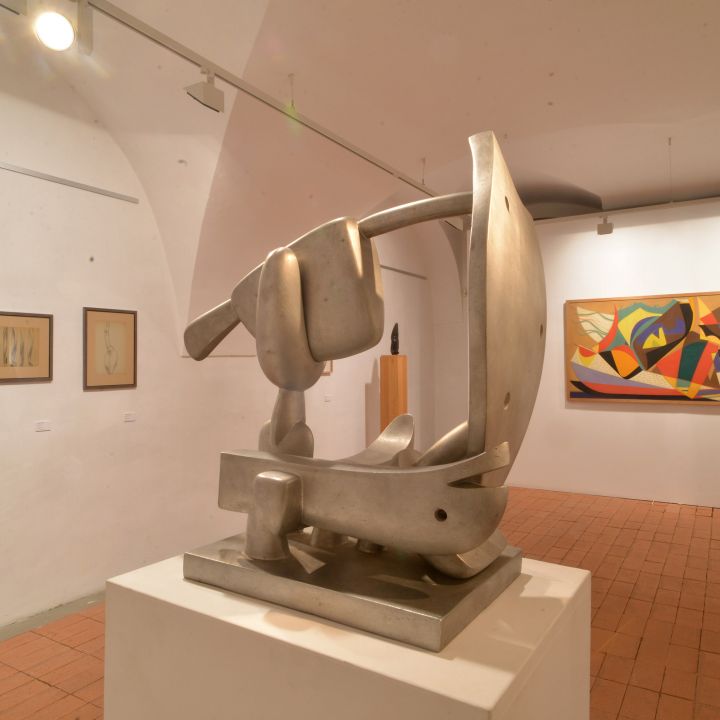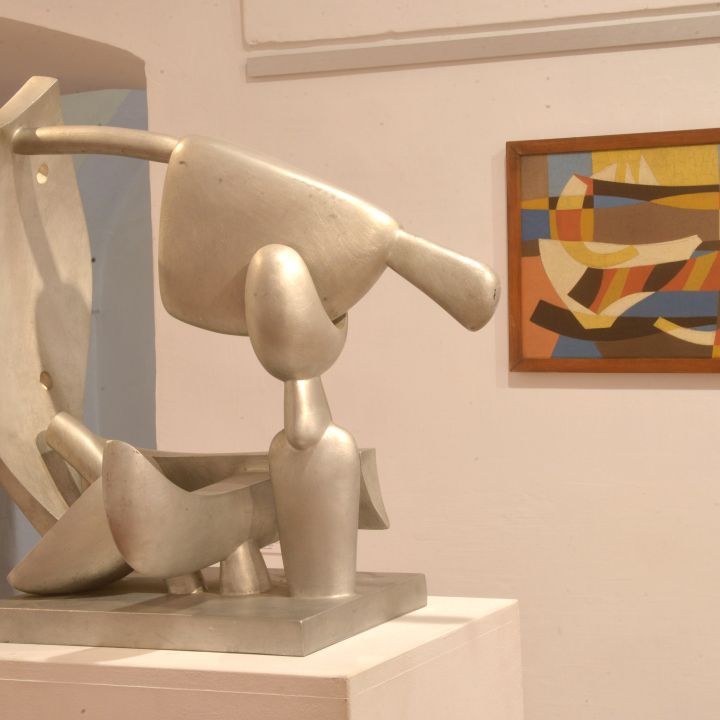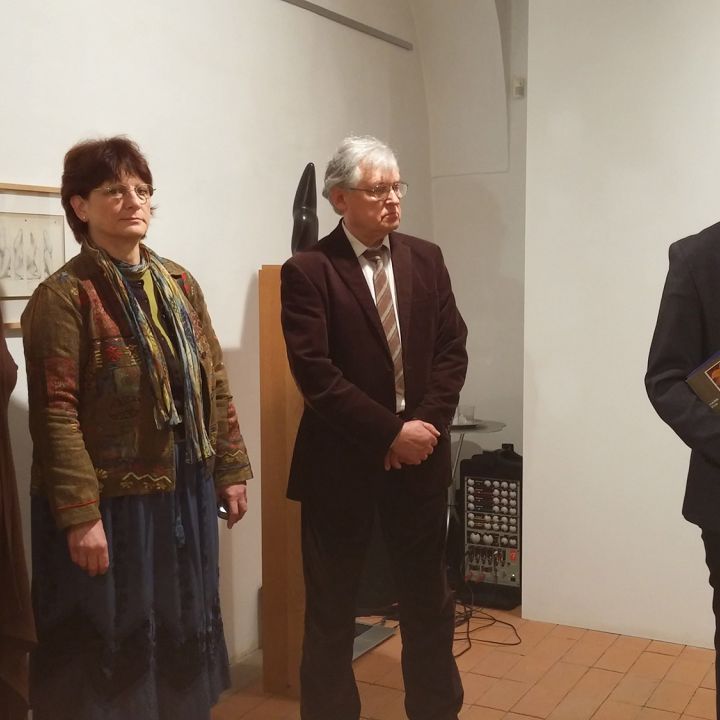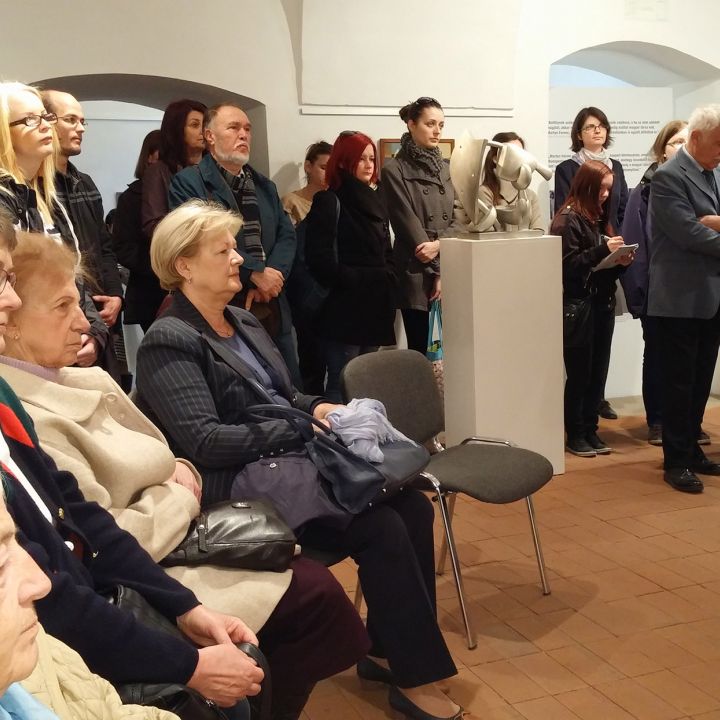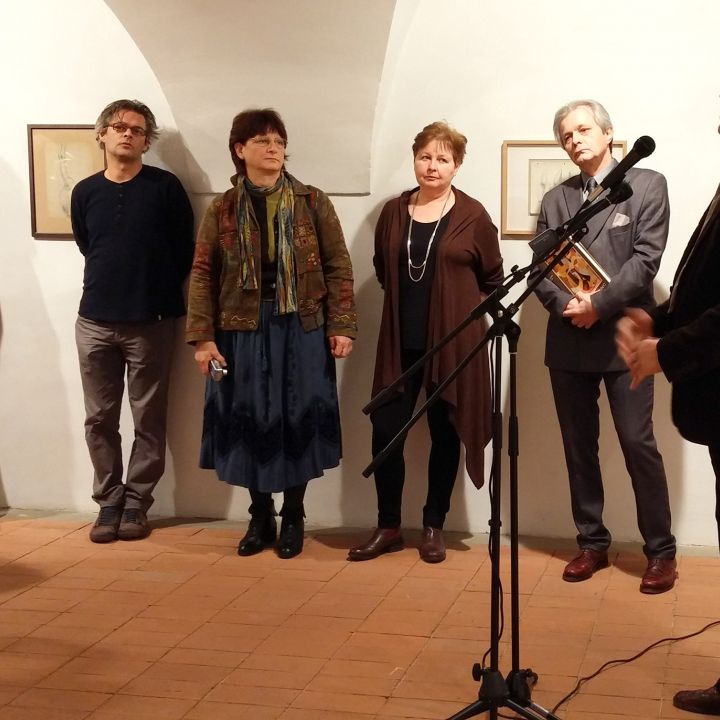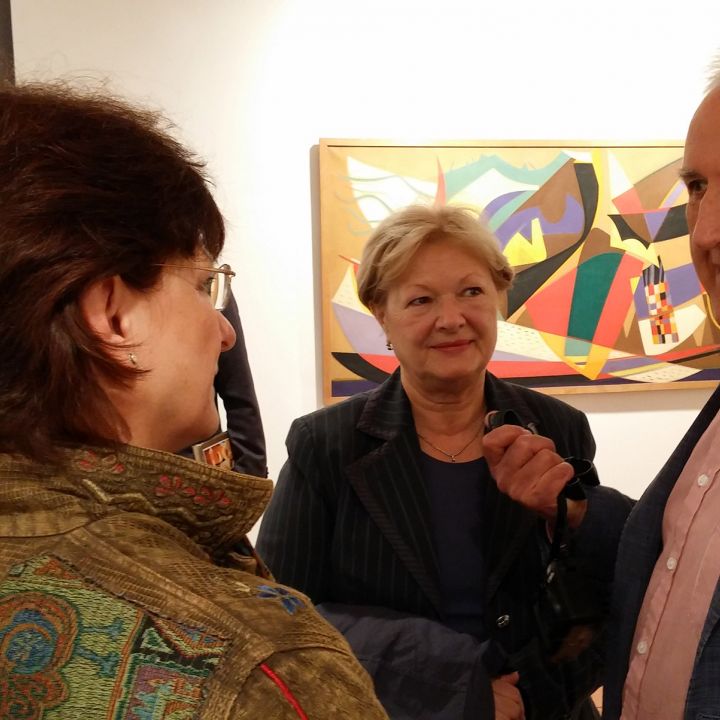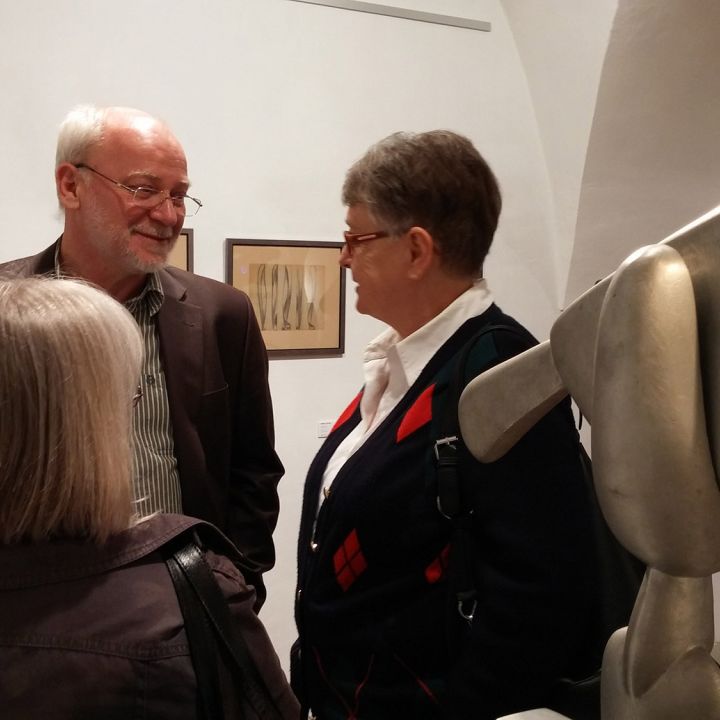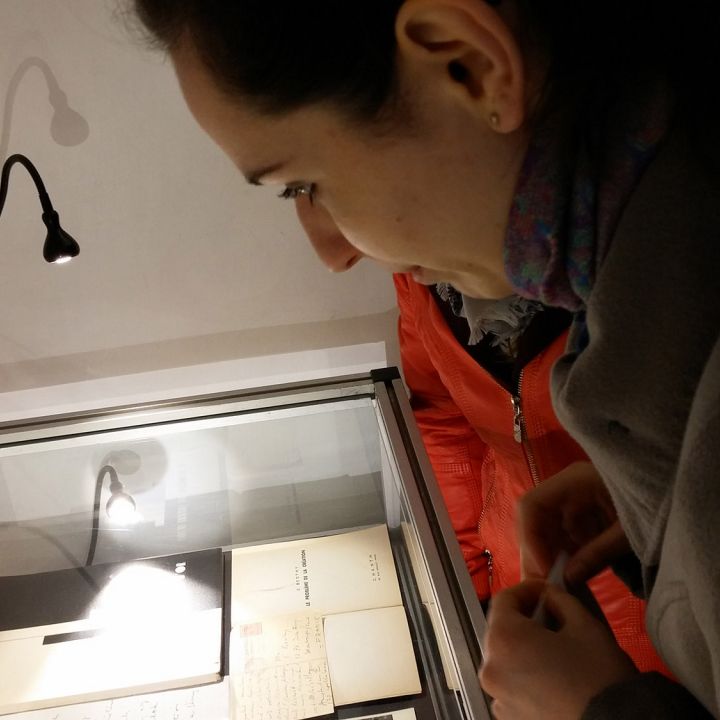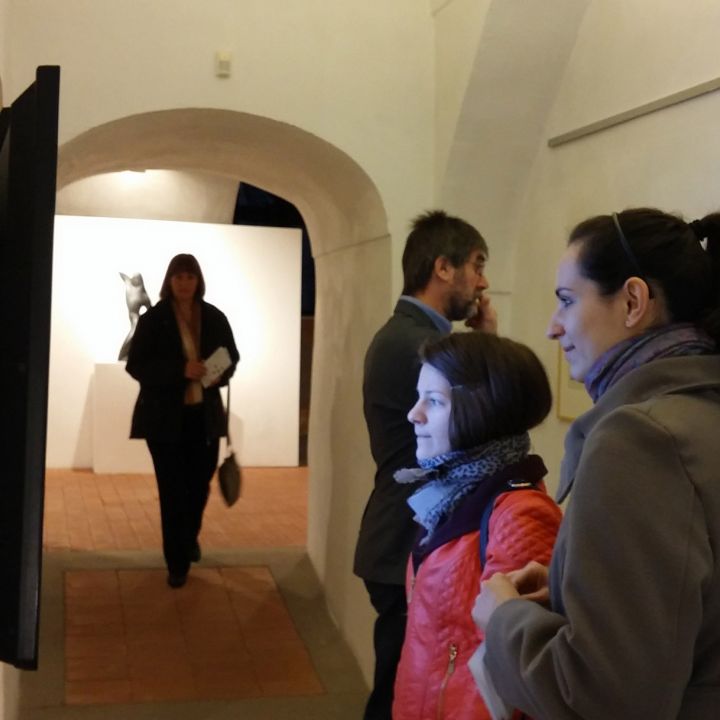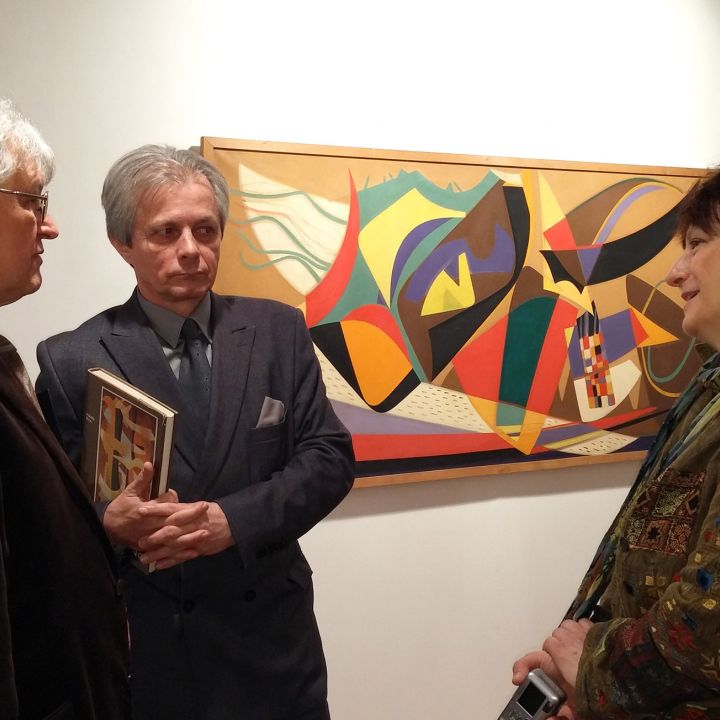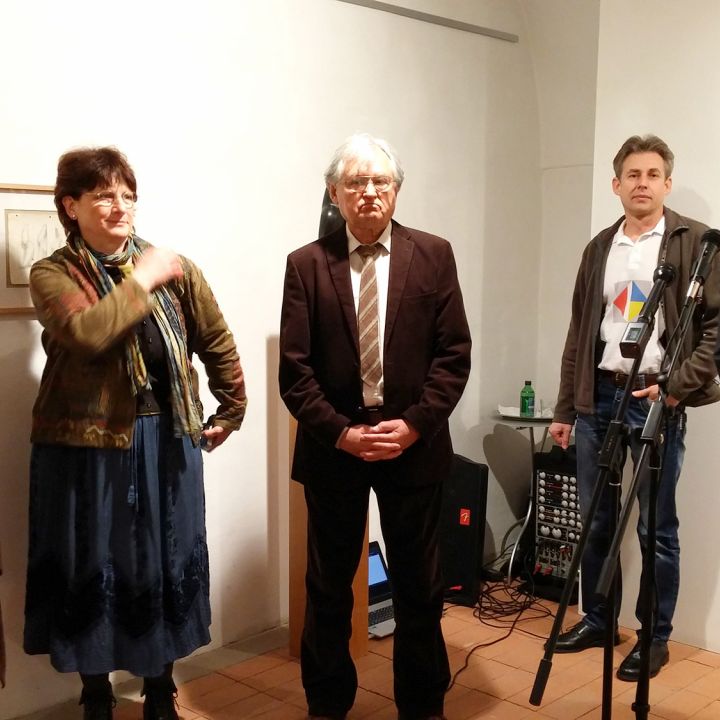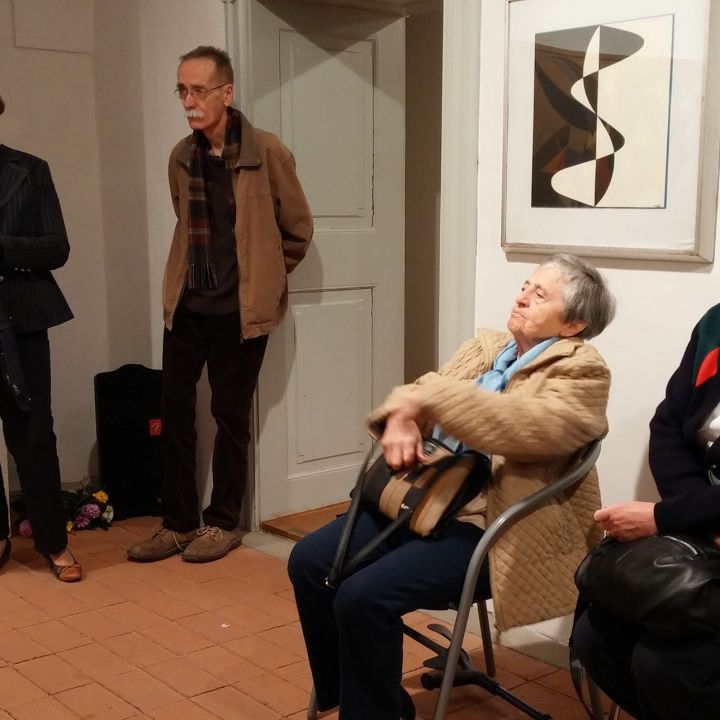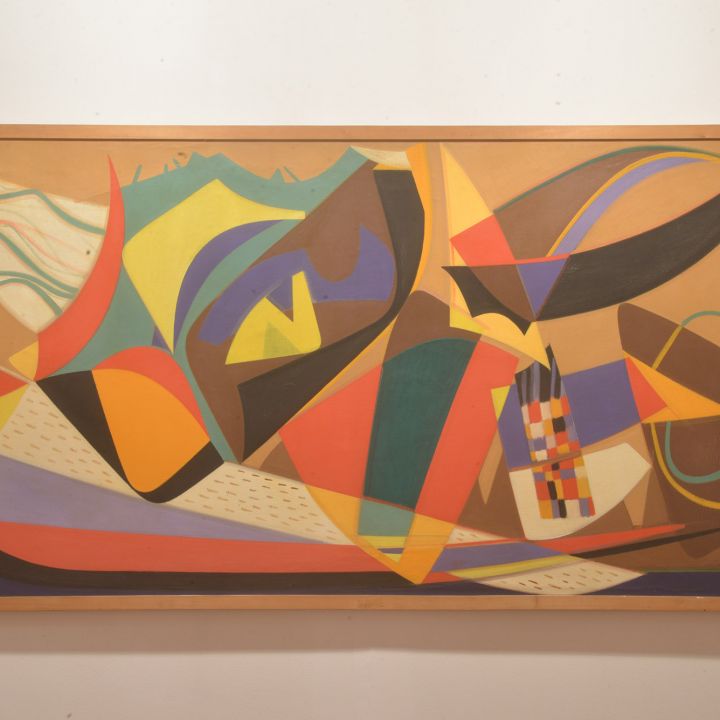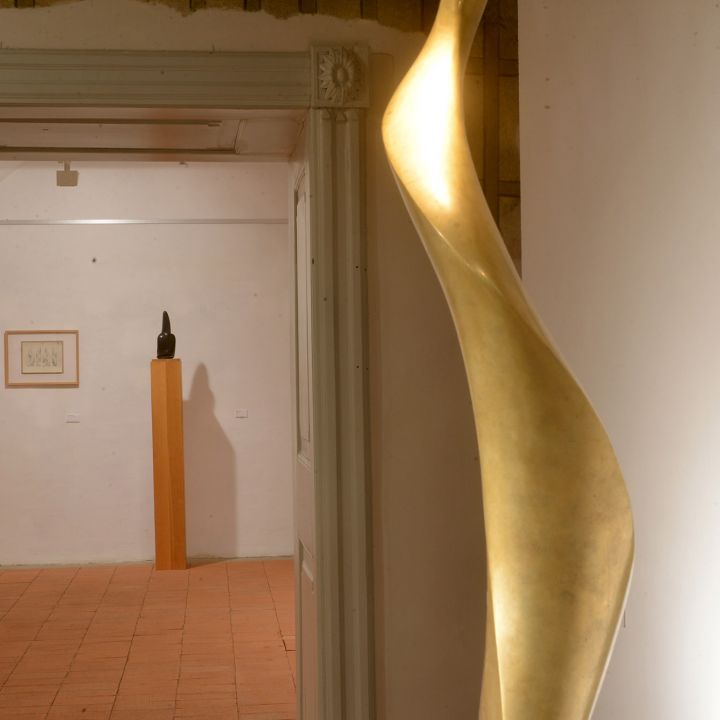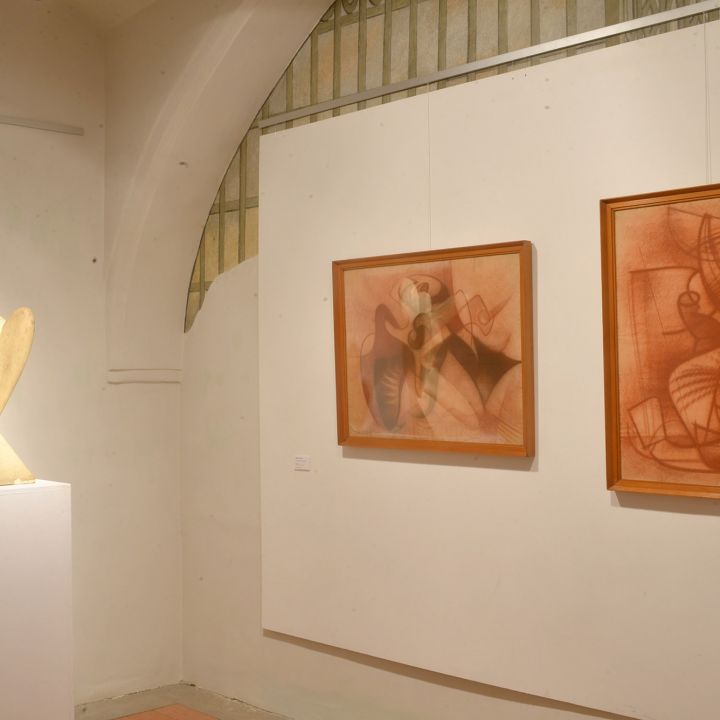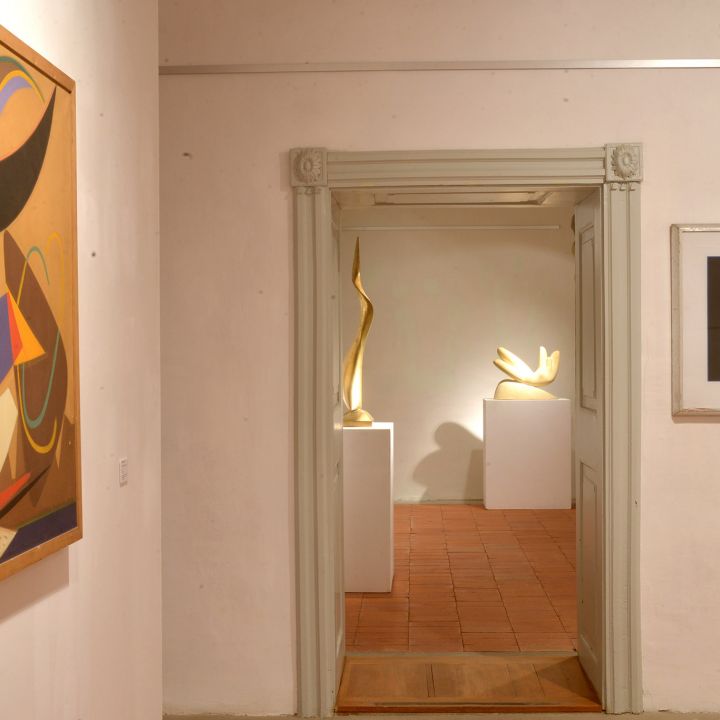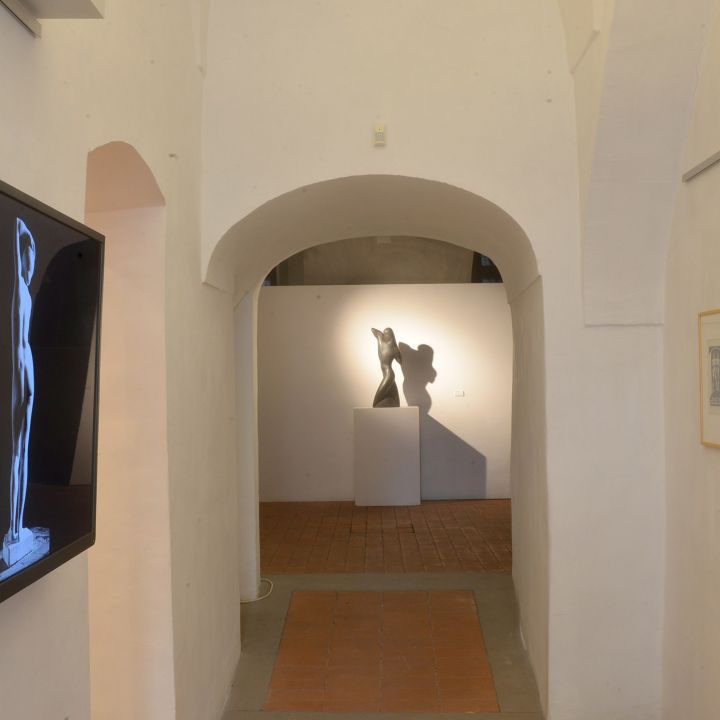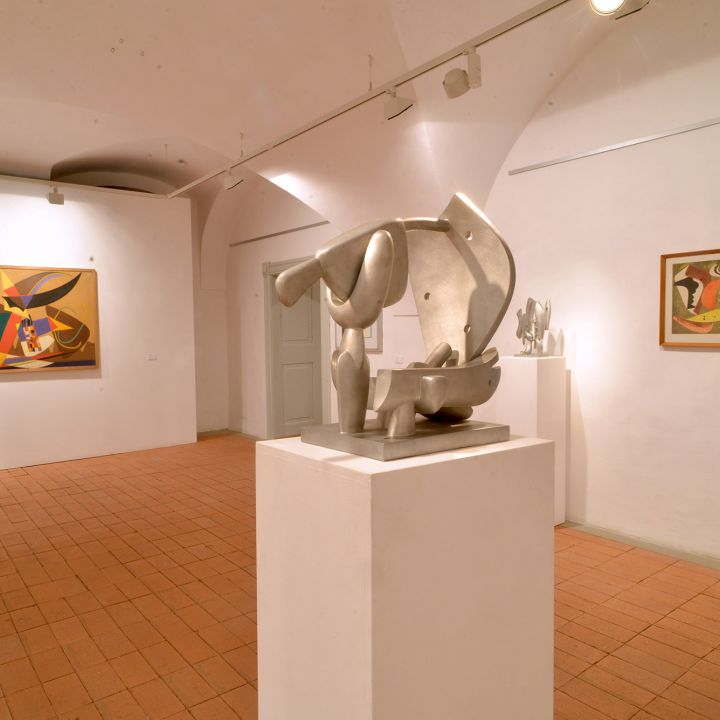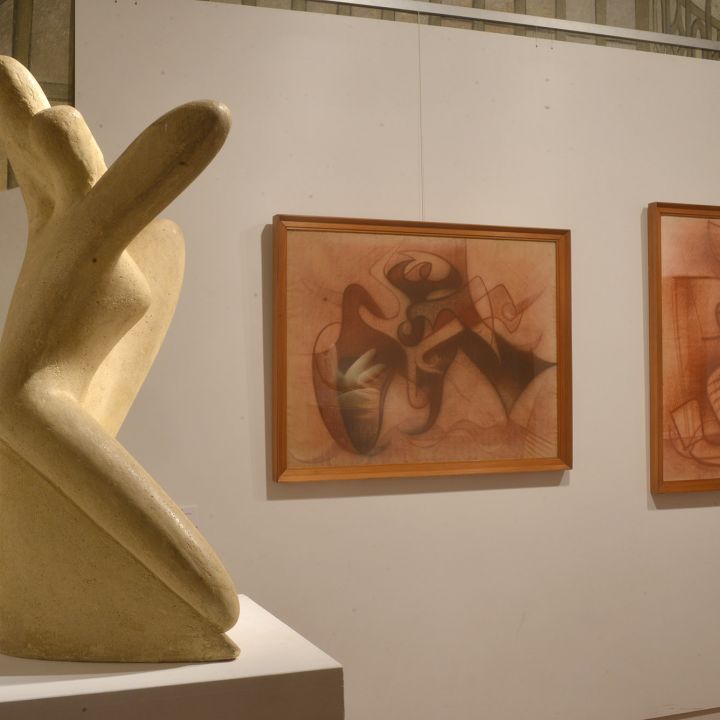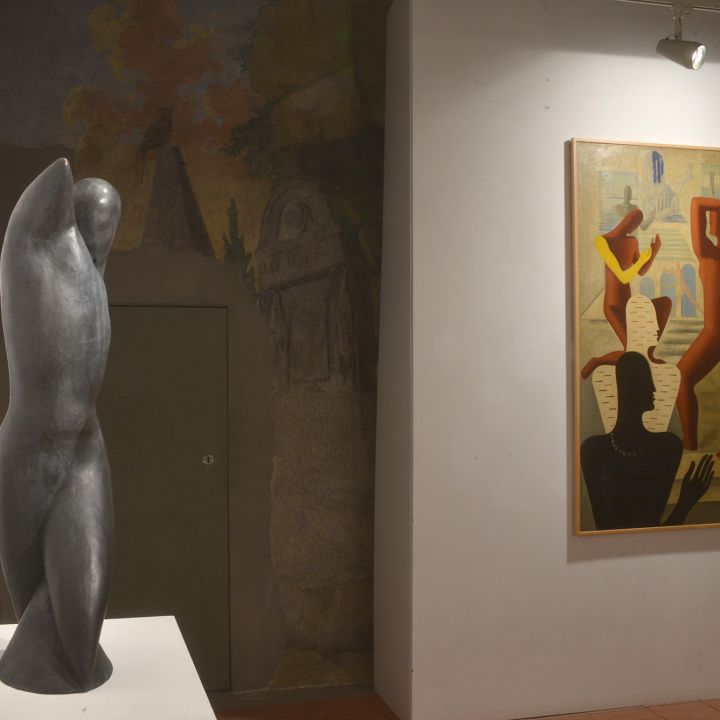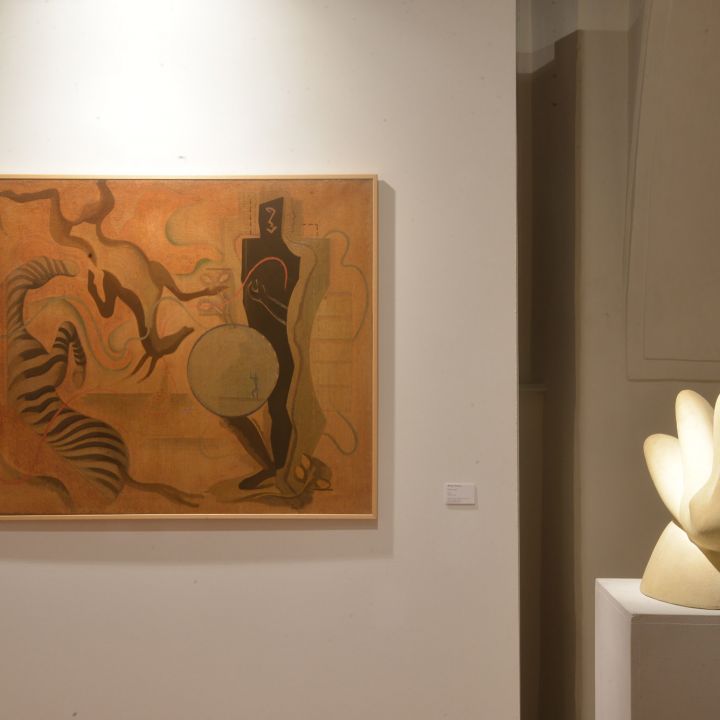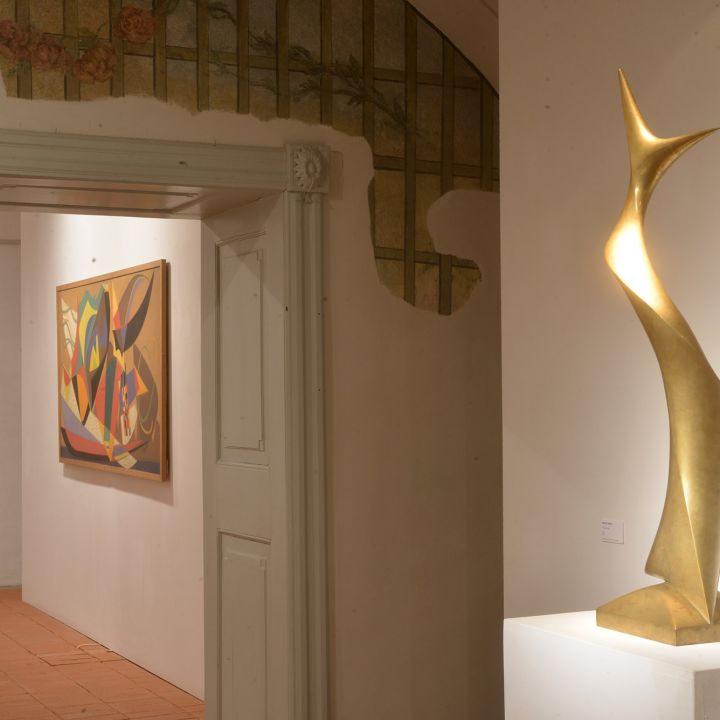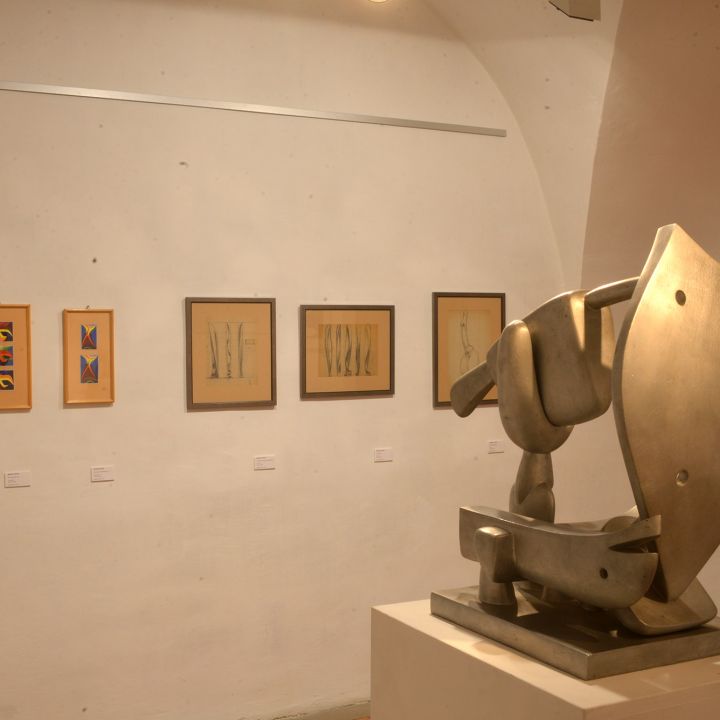The exhibition is part of the Hungarian Days 2015 Western Diaspora Days.
The exhibition is curated by art historians Judit Lorányi and Eszter Sarkadi
The exhibition was opened by Árpád Vígh, literary historian, professor, former director of the Hungarian Institute in Paris
The art of István Beöthy (1897-1961) and Ferenc Martyn (1899-1986)
The sculptor István Beöthy and the painter Ferenc Martyn are outstanding figures of 20th century modern Hungarian art. Their lives, artistic principles and creative work - although they went their separate ways - met at several points and on several occasions. They were contemporaries and companions, and the advice they received from József Rippl-Rónai guided them both towards Paris. It was in Paris, in the international bustle of the capital of art under the influence of styles and trends, important artistic events and excellent artistic colleagues, that they found their individual, abstract expression. From the 1920s and 1930s Beöthy and Martyn also played a role in mediating Franco-Hungarian artistic relations organising several exhibitions, lectures and publications. After the war Martyn returned home and settled in Pécs, but his French connections and his experience of Paris were to remain decisive for the rest of his life.
His ideas, philosophical thinking, attitude and abstract painting influenced his Hungarian contemporaries and his environment. He was one of the most important Hungarian representatives of the non-figurative movement. A permanent exhibition in Pécs offers a comprehensive overview of his art. Beöthy's work was completed and ended in Paris, but his ties to Hungarian art life were never severed. He is regarded as a Hungarian sculptor at the forefront of the European avant-garde and his work is mentioned alongside that of the most prominent representatives of European non-figurative movements, yet he is little known in his native Hungary. He was a versatile and active sculptor, theoretician and art organizer.
"Beöthy needed to belong somewhere and if it didn't come naturally, he organised it. And this time he had a Hungarian partner, Ferenc Martyn, with whom he had already exhibited at Abstraction-Création."
Krisztina Passuth: István Beöthy Enciklopédia Publisher, 2010
István Beöthy - Etienne Béothy (1887 Heves - 1961 Paris)
1887: Born on 2 September in Heves.
1918-1919: Studies at the University of Technology, then at a free school under the guidance of Rippl-Rónai and Márk Vedres.
1919-1924: Started a business making tomb monuments.
1920-1924: Sculpture student at the Hungarian Academy of Fine Arts.
1925-1926: After his tour of Western Europe he settles in Paris.
1928: First solo exhibition at the Sacre du Printemps Gallery in Paris.
1929: Participation in major abstract art exhibitions in Paris and Western Europe.
1931: Participated as a founding member in the work of the Abstraction-Création group, organizing and directing exhibitions; edited the group's journal.
1932: Joined the group Les Artistes Musicalistes.
1936: One of the organisers of the Budapest exhibition of the Musicalists.
1937-1939: Private studies in philosophy and aesthetics, publication of Problème de la Création (The Problem of Creation) and Série d'Or (The Golden Series) (1939). Prepared the exhibition of Hungarian artists in Paris and Budapest (1938).
1939-1945: Involved in the resistance movement in France, vice-president of the Hungarian Independence Movement, designs posters and leaflets.
He makes colour studies and gouaches.
1946-1949. Founding member of the Réalités Nouvelles group (1946).
1950-1955: Lectured at the École des Beaux-Arts, Paris, on the subject of the Golden Series. He worked with architects and craftsmen.
1956-1961: He is researching colour theory and planning a study.
On 27 November 1961 he died unexpectedly of a heart attack in his studio in Paris at the age of 64.
"Martyn worked for three years on the creation of a group, which with its annual exhibition in Budapest was intended to be a link between European and Hungarian art and to prove the existence and modernity of Hungarian abstract art."
Éva Hárs: Martyn Art Fund, 1975
Ferenc Martyn(Kaposvár 1899 - Pécs 1986)
1899: Born on 10 June in Kaposvár. He spent his childhood in the house of József Rippl-Rónai, where he became acquainted with the French painting culture of his time.
1918 - 1924: he studied at the Hungarian Academy of Fine Arts under József Rippl-Rónai and István Réti.
1926 -1939: Living in Paris, study trips in Western Europe, influence of the surrealist movements.
1930: he has been an adherent of the abstract movement, red chalk drawings, watercolours and large oil paintings.
1934: he was a member of the Abstraction-Création group.
1939: Leaves Paris as the Second World War approaches.
1940-1945: Works in Budapest. He protests against the violence of war with his series of drawings entitled Monsters of Fascism. Two years of military service during the war.
1945: Returns to Pécs.
1946: Organizer of the art scene in South Transdanubia and Pécs. Member of the European School, one of the first Hungarian representatives of the non-figurative movement.
1950-1960: Besides painting, drawing played an increasingly important role in his art.
1960-1986: He also made sculptures, ceramics, collages and book illustrations. His outstanding oeuvre and his example led to the establishment of a centre of modern art in Pécs in the 20th century.
He died in Pécs on 10 April 1986. A permanent museum exhibition of his works bequeathed to the Hungarian state was opened in Pécs.
Our collaborating partners:
o Janus Pannonius Museum, Pécs
o László Károly Collection, Veszprém
o Eszter Sarkadi, art historian, art collector

